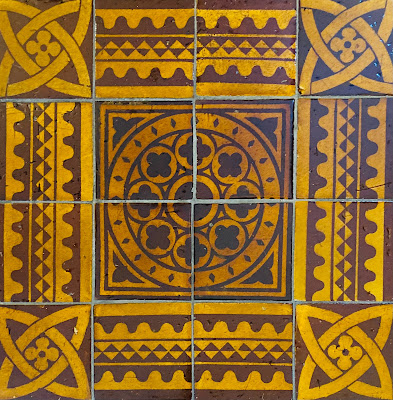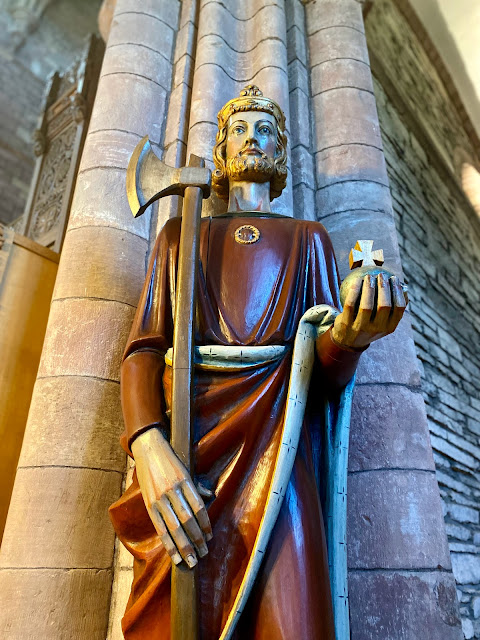John Rae, an Arctic explorer and native son, lies beneath this tomb. You don't often see depictions of men with their arms in this position.
These stones lay at the cemetery gate.
The graves were much, much older than I'd seen elsewhere in Scotland with some of the tombstone dates going back to the 15th century.
I loved this old building across the street.
Age, of course, being relative in this neck of the woods: William the Old, the Cathedral's first bishop, ordained by the Norwegian Catholic Church, moved into this palace across another street during the early twelfth century.
We drove to the Italian Chapel, built by World War II prisoners of war. Those same Italian prisoners had been sent to the Orkneys to construct the four concrete causeways known as the Churchill Barriers that now surround and protect the Scapa Flow. We drove over one to get to the chapel.
The chapel facade conceals a quonset hut. It couldn't compare with the cathedral but it charged admission to see its trompe l'oeil ceiling. A complete rip-off IMHO.
Although I did like this felt cross someone left behind in a fountain bowl.
We still had plenty of time to explore Mull Head before our dinner reservation. We unexpectedly came across the Gloup, a sea cave enthusiastically recommended by our Airbnb hostess after I told her how much we'd enjoyed our wee walk on Dingieshowe Beach. I wonder if she's aware that Orkney farmers reputedly led their infirm horses over the cliff to forestall the effort of disposal? A possibly apocryphal, definitely horrifying use of this inaccessible sea cave!
Our brief but spectacular hike across Mull Head reminded me how much I find divinity in nature. The stone used for the Neolithic sites we saw upon arrival in Orkney may have been peeled from formations like this.




































No comments:
Post a Comment